 |
Home | Charity | Feedback |
Cuba: Havana
Havana, Cuba: Cha, cha, cha; Chevys and cigars by Prakash Bang, Editor in Chief 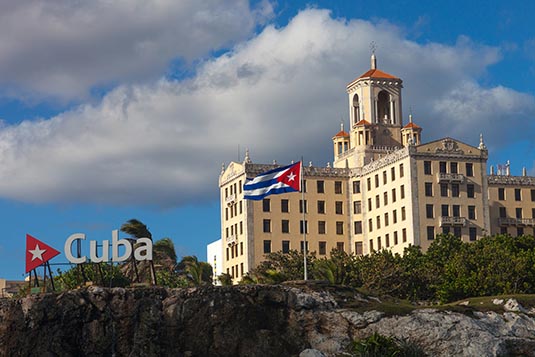 Cubans love their music. Cubans love their mojitos. Cubans love their cigars. Cubans love their cars. And Cubans love tourists. That best describes this beautiful country and their people. Aloof all these years, Cuba has now opened its doors and is fast becoming a popular destination to go to. 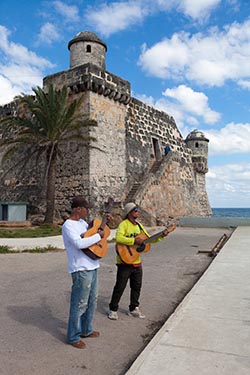 And that's exactly what I did... a quick 2 night / 3 day trip to Havana, the Capital of Cuba. Accompanying me was my wife and 3 friends. 5 of us had a rocking time. Actually, more days would have been wonderful, but since we had planned an 11-day Caribbean Cruise; we limited our exploration to Havana and Vinales - a quiet and charming little tobacco-producing region.
And that's exactly what I did... a quick 2 night / 3 day trip to Havana, the Capital of Cuba. Accompanying me was my wife and 3 friends. 5 of us had a rocking time. Actually, more days would have been wonderful, but since we had planned an 11-day Caribbean Cruise; we limited our exploration to Havana and Vinales - a quiet and charming little tobacco-producing region.
Prior to the trip, there was a confusion that was bothering us - whether as Indian citizens we would need a Cuban visa? Enquiries with travel agents and airlines did not provide with any finite answers. Some said, a visa from Cuban Consulate in India was needed; while some said, Cuban Travel Cards could be purchased from airline counters prior to boarding from Miami or Orlando international airports. Not to take our chances, we played safe... got our visas from Cuban Consulate in New Delhi, India. We were to board from Miami and we opted to fly American Airlines. At the check-in counter, the airline staff were giving away Cuban Travel Cards at $100 each! Boy, the trouble we took and the price we paid to get our visas! Well, no complaints as we could sleep peacefully. Barring some restrictions to US citizens, I believe, travellers of other nationalities should not have any issues. Do check with your local authorities. 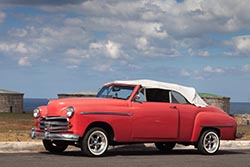 From Miami, it's just about a 45-minute flight to Havana. If you take a window seat, be delighted with beautiful views of the ocean below being bisected by the highway to Key West.
From Miami, it's just about a 45-minute flight to Havana. If you take a window seat, be delighted with beautiful views of the ocean below being bisected by the highway to Key West.
For our hotel and ground handling in Cuba, we had used the services of Cubatur. Nice bunch of people with friendly and knowledgeable staff. At the Havana airport, waiting for us was the driver of a modern Chinese made van and our guide. The 3 of them would show us around and be with us throughout the trip. I have purposely used the word 'modern' because Cuba is famous to chug along in vintage vehicles. Of course, with country's borders and trade opening up, the Cuban streets were busy handling old American and Russian made cars as well as new versions from China and South Korea. 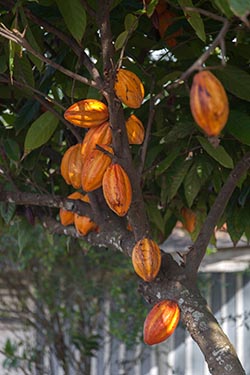 For our stay we were booked at Hotel Parque Central, a heritage property located bang in centre of Havana, overlooking the beautiful Capitol Building and the Park Central. The Parque Central comprises two buildings, a colonial section and modern tower, linked by a stylish, underground tunnel. Both sections have independent lobbies, restaurants, and rooms. We opted for the colonial section. By the time we checked-in, it was past noon. The plan was to have a quick bite (which we did at an Italian restaurant, across the street) and then tour the old town.
For our stay we were booked at Hotel Parque Central, a heritage property located bang in centre of Havana, overlooking the beautiful Capitol Building and the Park Central. The Parque Central comprises two buildings, a colonial section and modern tower, linked by a stylish, underground tunnel. Both sections have independent lobbies, restaurants, and rooms. We opted for the colonial section. By the time we checked-in, it was past noon. The plan was to have a quick bite (which we did at an Italian restaurant, across the street) and then tour the old town.
As we stepped out of our hotel door, the first thing we noticed was the imposing Capitol Building. The El Capitolio, or National Capitol Building, held the organization of government in Cuba from 1929 until the Cuban Revolution in 1959. The land currently occupied by the Capitol, then belonging to the railway station of Villanueva, is framed in red. Opposite the Capitol are the city walls demolished in 1863. The building project began on April 1926, during the Gerardo Machado administration. Construction was overseen by the U.S. firm of Purdy and Henderson. Prior to the Cuban Revolution of 1959, the Congress was housed in the building, the Congress was abolished and disbanded following the Cuban Revolution in 1959 and the building fell into disrepair. 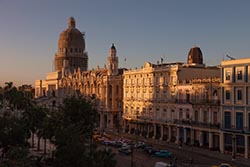 El Capitolio has a size of 681 by 300 feet. Its design is similar to that of the Capitol Building in Washington D.C, but a meter higher, a meter wider, and a meter longer, as well as much richer in detail. Completed in 1929, it was the tallest building in Havana until the 1950s. It houses the world's third largest indoor statue. As you can see in the pictures, the Government of Cuba has been slowly restoring the building for use once again as the home of Cuba's National Assembly.
El Capitolio has a size of 681 by 300 feet. Its design is similar to that of the Capitol Building in Washington D.C, but a meter higher, a meter wider, and a meter longer, as well as much richer in detail. Completed in 1929, it was the tallest building in Havana until the 1950s. It houses the world's third largest indoor statue. As you can see in the pictures, the Government of Cuba has been slowly restoring the building for use once again as the home of Cuba's National Assembly.
Driving along the majestic Park Paseo del Prado, we reached the sea shore. We were dropped at a convenient corner, on the edge of the old town. We now had a couple of hours of walking to do. And that indeed, was the best way to explore the old-world charm. We had to negotiate a maze of majestic plazas, many streets and its cross lanes. 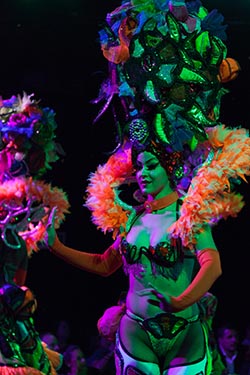 We alighted near a fort called The Castillo de la Real Fuerza (meaning, Castle of the Royal Force). Considered to be the oldest stone fort in the Americas; it was a bastion fort on the western side of the harbour. Originally it was built to defend against attack by pirates, but that was not to be. It suffered from a poor location - was too far inside the bay.
We alighted near a fort called The Castillo de la Real Fuerza (meaning, Castle of the Royal Force). Considered to be the oldest stone fort in the Americas; it was a bastion fort on the western side of the harbour. Originally it was built to defend against attack by pirates, but that was not to be. It suffered from a poor location - was too far inside the bay.
A previous fort, the Fuerza Vieja (Old Fort), was badly damaged in 1555 during an attack on Havana by the French privateer Jacques de Sores and eventually was demolished in 1582. In 1558 Bartolome Sanchez, an engineer appointed by King Philip II of Spain, began work on the new fort, initially known as the Fuerza Nueva (New Fort). The Fuerza Vieja was set back from the harbour, but the new fort was planned to be closer to the harbour to give it a better location. Due to local disputes, the fort was not completed until 1577, with slaves and French prisoners providing most of the labour. The fort was built of limestone quarried from the Havana shoreline and the fortification incorporated thick sloping walls, a moat, and a drawbridge. The governor, Francisco Carreno, ordered the addition of an upper storey as barracks and ammunitions store, but on completion, the fort proved to be too small for practical use! 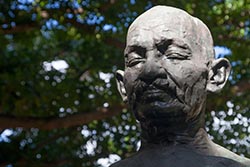 Despite being positioned closer to the harbour than the Fuerza Vieja, it quickly became apparent that the new fort was still too distant from the mouth of the harbour to serve effectively as a defensive bulwark. Instead Juan de Tejeda adopted it as the residence of the Governor of Havana.
Despite being positioned closer to the harbour than the Fuerza Vieja, it quickly became apparent that the new fort was still too distant from the mouth of the harbour to serve effectively as a defensive bulwark. Instead Juan de Tejeda adopted it as the residence of the Governor of Havana.
In 1634, Juan Vitrian de Viamonte added a watchtower with a weathervane sculpted in the form of a woman, by Geronimo Martin Pinzon, an artist from Havana, and based on the figure crowning La Giralda in Seville. Although the reason for the choice of this figure, called La Giraldilla, is not known, a common belief is that it honours Isabel de Bobadilla, Havana's only female governor, who assumed control from her husband Hernando de Soto when he undertook an expedition to Florida. She spent many years scanning the horizon for signs of his returning ship. The figure became the symbol of the city of Havana (it features on the Havana Club rum label), and the original is now in the City Museum. The figure on the watchtower is a later copy. 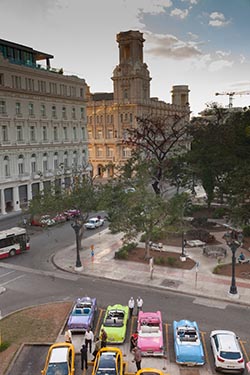 Across the fort stands Templete. Built in 1827, El Templete commemorates the first mass and town council held in the city, at the foot of a ceiba tree that grew on the northeast corner of what would soon evolve as the Plaza de Armas. The structure imitates a small Greco-Roman temple, with Doric columns and classical pediment.
Across the fort stands Templete. Built in 1827, El Templete commemorates the first mass and town council held in the city, at the foot of a ceiba tree that grew on the northeast corner of what would soon evolve as the Plaza de Armas. The structure imitates a small Greco-Roman temple, with Doric columns and classical pediment.
Construction was completed in 1828 in honour of Queen Josefa Amalia, wife of King Fernando VII. Its architecture represented the transition of the period, from the 19th-century ‘Cuban baroque’ to the neoclassical style. The small interior houses three large oil paintings by the French artist Jean Baptiste Vermay, a disciple of David and founder in 1818 of the San Alejandro Arts Academy in Havana. Every year, on November 16, the day on which Havana was founded, a procession of the city’s 16th-century maces – normally kept in the Museo de la Ciudad – makes its way around the Plaza de Armas to the ceiba to commemorate the city’s founding. People queue up all evening to walk around the sacred ceiba tree three times and make a wish for it to happen. 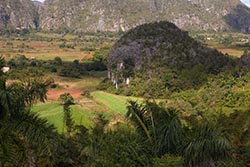 The early city was formally founded in 1519 on the northeast side of what would soon be laid out as Plaza de la Iglesia —named for the simple church that stood here until 1741, when it was destroyed following the explosion of the HMS Invincible in the harbour (the mast landed on the church). The square had by then already been cobbled, although it was renamed Plaza de Armas — essentially, “Parade Ground” — and became the main administrative centre of the city. In colonial times, the square was the site of military parades, musical concerts and formal evening promenades, and it maintained its political and administrative role until the mid-20th century. It is surrounded by buildings spanning four centuries.
The early city was formally founded in 1519 on the northeast side of what would soon be laid out as Plaza de la Iglesia —named for the simple church that stood here until 1741, when it was destroyed following the explosion of the HMS Invincible in the harbour (the mast landed on the church). The square had by then already been cobbled, although it was renamed Plaza de Armas — essentially, “Parade Ground” — and became the main administrative centre of the city. In colonial times, the square was the site of military parades, musical concerts and formal evening promenades, and it maintained its political and administrative role until the mid-20th century. It is surrounded by buildings spanning four centuries.
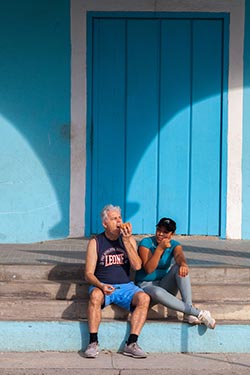 Nowadays Plaza de Armas is a place for locals to mingle and relax in the park that's surrounded by vendors selling second-hand books. It is almost customary for tourists to be photographed with colourfully dressed locals. 2 Euros should do the trick.
Nowadays Plaza de Armas is a place for locals to mingle and relax in the park that's surrounded by vendors selling second-hand books. It is almost customary for tourists to be photographed with colourfully dressed locals. 2 Euros should do the trick.
Talking of currency, it's good to know a little about Cuban monetary system. Cuba uses two official currencies: The CUP (Cuban Peso) and the CUC (Cuban Convertible Peso). As a tourist, you’ll use the CUC a lot more frequently. CUC is more valuable of the two. The value of the CUC is pinned to the U.S. dollar so that 1 CUC will always equal 1 U.S. dollar. However, there are some exchange and bank fees that you will have to cover for. The CUP is primarily used by residents of Cuba. As a tourist, you probably won’t use this one very often, but it may benefit you to carry a small amount of CUP for small expenses like street food, bus fare, flea market finds. 1 CUC equals 25 CUP. So, how are you supposed to know the difference between the CUC and the CUP and avoid getting scammed? Here is the secret: the CUC bills don’t have faces. If you expect to receive CUC in a transaction and see a face on the bill, you will be getting CUP instead! Also, look for the words “pesos convertibles” right at the centre of the CUC bill. 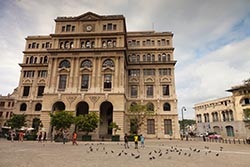 Enough of money talk. Let's move on.
Enough of money talk. Let's move on.
Plaza de San Francisco is one of the four leading plazas laid out in the 17th century. The spacious cobbled square, which was fully restored in the 1990s, takes its current name from the Franciscan convent built there. Formerly a small inlet opening directly to the bay, the plaza was first laid out beginning in 1575 when the land was drained. From the start it was a place where galleons were serviced and slaves unloaded; one of the terminals of the Zanja Real (the first aqua duct in Havana) supplied water supply to the square to victual ships tied up at the wharves. We can see the exposed section of the aqua duct in a side street of the plaza. 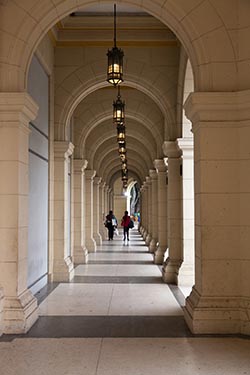 The plaza served as a marketplace and during the early colonial period a fair took place here every October with cock fights. In the late 17th and 18th century, many wealthy nobles built their homes on the cobbled plaza. The market and cockfight ring were then moved to Plaza Vieja after complaints from the wealthy resident and the convent’s monks.
The plaza served as a marketplace and during the early colonial period a fair took place here every October with cock fights. In the late 17th and 18th century, many wealthy nobles built their homes on the cobbled plaza. The market and cockfight ring were then moved to Plaza Vieja after complaints from the wealthy resident and the convent’s monks.
In 1730, the Iglesia y Convento de San Francisco de Asís was initiated. Today the basilica dominates the spacious square to the south side, while to the north is the neoclassical Lonja del Comercio (Commercial Exchange), dating from 1907 and topped by a bronze image of a winged Mercury. The harbour front is now hidden from view by the 1914 Spanish-Renaissance Aduana (Customs House), the northern section of which has been restored as the Terminal Sierra Maestra for cruise ships. The 16th-century Plaza Vieja has always been a residential rather than a military, religious or administrative space, and is surrounded by elegant colonial residences, combined with a few very striking early 20th-century art nouveau buildings. Over the past 150 years, Plaza Vieja has played host to an open-air food market, a park, an outrageously misjudged car park built by Batista in 1952 (now demolished) and an amphitheatre. However, restoration is gradually re-establishing Plaza Vieja’s original atmosphere; the Carrara showpiece fountain at the center of the square is a replica of the original 18th-century one by Italian sculptor Giorgio Massari that was destroyed by the construction of the car park; and many of the 18th-century residences around the square are now restored with housing on the top floors and commercial establishments, including several small museums and art/photo galleries, on the ground floor. 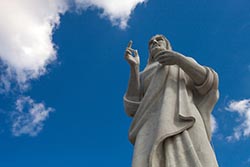 Having explored most of the popular icons of the old town, it was time to walk back to our hotel negotiating the narrow streets. We made brief stops to appreciate the beautiful music that was being played in many of the restaurants. Not to forget gulping down freshly squeezed orange and sugarcane juice. In the evening we had plans to enjoy Cuban cabaret – Tropicana.
Having explored most of the popular icons of the old town, it was time to walk back to our hotel negotiating the narrow streets. We made brief stops to appreciate the beautiful music that was being played in many of the restaurants. Not to forget gulping down freshly squeezed orange and sugarcane juice. In the evening we had plans to enjoy Cuban cabaret – Tropicana.
Tropicana was once called “the most appealing and magnificent night club in the world”. It had a history attached. Villa Mina emerged at the entrance of Marianao neighborhood in Havana and adjoining the Zanja-Marianao railroad from the beginnings of the last century. A beautiful suburban property belonging to Regino Truffin, surrounded by a rainforest, was indeed a setting for a cabaret turned into a whole legend for the world music shows. 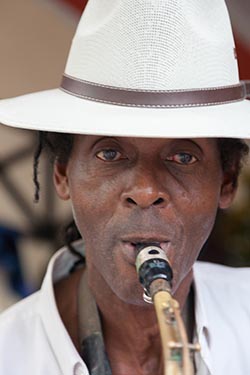 By the late 1930’s, Mina Perez Chaumont, Truffín´s widow, decided to rent the property out to a group of entrepreneurs headed by Victor de Correa who wanted to set a night club. Sergio Orta, show choreographer and director, suggested Tropicana as the name for this club, he was inspired by the homonymous melody from the flutist and composer Alfredo Brito, whose premiere took place in this place. The club was established as Tropicana during the year 1940’s Christmas celebrations. Tropicana captivated the wealthy elite really fast.
By the late 1930’s, Mina Perez Chaumont, Truffín´s widow, decided to rent the property out to a group of entrepreneurs headed by Victor de Correa who wanted to set a night club. Sergio Orta, show choreographer and director, suggested Tropicana as the name for this club, he was inspired by the homonymous melody from the flutist and composer Alfredo Brito, whose premiere took place in this place. The club was established as Tropicana during the year 1940’s Christmas celebrations. Tropicana captivated the wealthy elite really fast.
Talking of music, good to know that 'cha, cha, cha' is a Cuban creation. A tune that rocked the world ever since. The music was introduced by Cuban composer and violinist Enrique Jorrin in the early 1950s. This rhythm was developed from the danzon-mambo. The name of the dance is derived from the shuffling sound of the dancers' feet! Unfortunately, just before the show it began to rain. The organisers quickly arranged for the performance to be held indoors. Some time was lost, but not the charm. Prior to the show we had our dinner at Tropicana's restaurant. We had a dinner-show combo ticket. At about midnight, we crashed into our beds. Tomorrow would be another long day... a trip to Vinales. 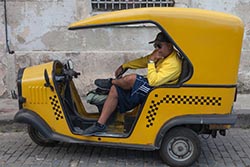 After breakfast, we left for Vinales. The drive took us alongside Malecon. This boulevard was first named Avenida del Golfo and is Cuba’s most famous sea-side avenue. The project was undertaken by Don Francisco de Albear, Cuba’s greatest engineer at the time. Albear came up with a complex but smart design for the seawall, which was to be a lot more than just a promenade.
After breakfast, we left for Vinales. The drive took us alongside Malecon. This boulevard was first named Avenida del Golfo and is Cuba’s most famous sea-side avenue. The project was undertaken by Don Francisco de Albear, Cuba’s greatest engineer at the time. Albear came up with a complex but smart design for the seawall, which was to be a lot more than just a promenade.
The architectural richness of the Malecon is also expressed through 18th and 19th century stately homes, followed by a row of 20th-century buildings with an unusual combination of styles and profusion of portals, columns and pilasters that loosely follow classical lines. It is a place where couples come to make amends, especially at sunset, in the company of children and fishermen. The boulevard is indeed Havana’s outdoor lounge. 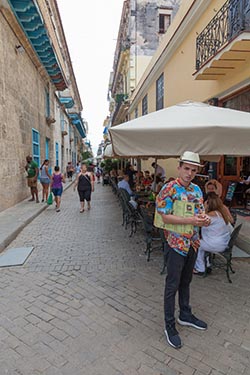 Havana’s seaside Malecon Boulevard spills into the tunnel beneath the Rio Almendares and takes you out into Miramar on Avenida Street. Known colloquially as Quinta Avenida, this fast-paced double-width artery runs ruler-straight through the heart of middle- and upper-class Miramar.
Havana’s seaside Malecon Boulevard spills into the tunnel beneath the Rio Almendares and takes you out into Miramar on Avenida Street. Known colloquially as Quinta Avenida, this fast-paced double-width artery runs ruler-straight through the heart of middle- and upper-class Miramar.
The face of Miramar is changing rapidly. The economic reforms have unleashed a wave of entrepreneurship. Everywhere there’s evidence of private investments by moneyed Cubans and foreign partners as chic nightclubs pop up alongside state-of-the-art offices and spruced up mansions housing fashion stores, banks, real estate offices, and foreign company offices; and large apartment blocks serving a growing foreign expat community. Flanked by mansions of the formerly well-off gentry (most of whom fled Cuba after 1959), ‘Quinta’ is with good reason known as “Embassy Row,” as many glorious buildings now house foreign embassies. Continuing west, we arrived park remarkable for its huge ficus trees dropping their root branches to the ground like cascading water. This twin park - Parque de los Ahorcados boasts a statue of the early 20th-century Mexican freedom fighter Emiliano Zapata on its southern side, and a pantheon and bust of Mahatma Gandhi on the north. 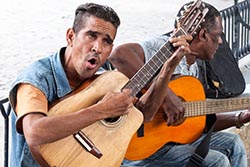 We soon left the city behind and were on to the highway to Vinales.
We soon left the city behind and were on to the highway to Vinales.
Our first stop was at a tobacco growing farm that also doubled up as a cigar making factory. We were shown around by the owner family. Dotting the tobacco plantations were Royal Palm trees. Among the many variites of palms that grow in Cuba, the Royal Palm is recognised as the country's national tree. We were quickly briefed about how the tobacco is cultivated and its drying process. Then came the interesting part... the owner carefully rolled out a few cigars and even offered one to us. Since I was a non-smoker, one of my friends enjoyed the privilege of a few satisfying puffs! While the puffing was on, I had the privilege of sipping some freshly brewed coffee made of beans that were also grown on the farm. 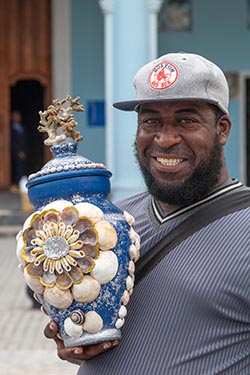 Cuba has many famous brands of cigars. And the brands have had a loyal following. Here are examples of 4 brands and their followers:
Cuba has many famous brands of cigars. And the brands have had a loyal following. Here are examples of 4 brands and their followers:Cohiva: Fidel Castro Montecristo: Che Guevara Romeo y Julieta: Winston Churchill Partagas: Jonh F Kennedy Our next stop was a brief one which was popularly known as 'view-point' stop that offered panoramic views of the Vinales Valley. The Vinales Valley in the Sierra de los Organos near the western end of the island of Cuba is an outstanding karst landscape encircled by mountains and dotted with spectacular dome-like limestone outcrops (maggots) that rise as high as 300 metres. Colonised at the beginning of the 19th century, the valley has fertile soil and a climate conducive to the development of stock-raising and the cultivation of fodder and food crops. Traditional methods of agriculture have survived largely unchanged on this plain for several centuries, particularly for growing tobacco. The quality of this cultural landscape is enhanced by the vernacular architecture of its farms and villages, where a rich multi-cultural society survives, its architecture, crafts and music illustrating the cultural development of Cuba and the islands of the Caribbean. 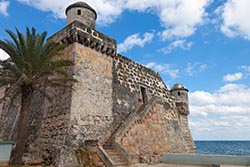 Further, we drove towards the famous Mural of Prehistory, located in the valley of Dos Hermanas, This mural shows the evolution of life. One can see 12 pieces of the evolutionary process of men and animals in the Sierra de los Organs, in its different stages. In it are represented Guanahatabeyes Indians, species of mammals, gigantic animals, as well as some molluscs. The rock was washed and drains were also made in it to avoid erosion in the future due to the rain. It is 120 metres high and 160 metres wide. The artist was Leovigildo Gonzalez Morillo, who was Director of Cartography of the Academy of Sciences of Cuba.
Further, we drove towards the famous Mural of Prehistory, located in the valley of Dos Hermanas, This mural shows the evolution of life. One can see 12 pieces of the evolutionary process of men and animals in the Sierra de los Organs, in its different stages. In it are represented Guanahatabeyes Indians, species of mammals, gigantic animals, as well as some molluscs. The rock was washed and drains were also made in it to avoid erosion in the future due to the rain. It is 120 metres high and 160 metres wide. The artist was Leovigildo Gonzalez Morillo, who was Director of Cartography of the Academy of Sciences of Cuba.
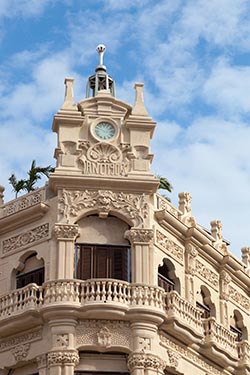 After a Cuban lunch at one the local restaurants, we spent some time walking the main street of the charming little town of Vinales. At 4 we began our return journey to Havana. In the evening, we had booked the show of Cuba's another famous cabaret - The Parisien.
After a Cuban lunch at one the local restaurants, we spent some time walking the main street of the charming little town of Vinales. At 4 we began our return journey to Havana. In the evening, we had booked the show of Cuba's another famous cabaret - The Parisien.
The Parisien is located within the Hotel Nacional and benefits from the same rich history. The show is on a much smaller scale than the Tropicana with much fewer dancers, which makes it more intimate and cozy. The dancers are as beautiful as ever, and the costumes, choreography and routines excellent. The next morning was the real fun part of our trip. Vintage cars were booked for the day. The 5 of us would be in 2 separate vintage cars (mine was a Pontiac) that would take us around with visits to the Revolution Plaza, Jose Marti memorial, the Ernest Hemingway House, a fishing village, Christ the Havana Statue, the Castle del Morro, a lunch at the famous Bodeguita del Medio Restaurant, a daiquiri drink at Floridita before being dropped at the airport for our flight to Miami. 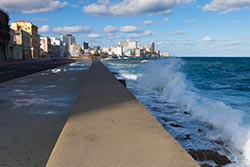 The idea of building the Revolution Square emerged in the 1940s, when an international contest was organized to erect a monument to honour Jose Marti, Cuba’s National Hero. In 1943 the project was finally approved. Several years passed by and in 1952, just before the 100th anniversary of the birth of Jose Marti, a government commission rejected the winning project and chose the design that got the third place, claiming that a vertical structure would be more appropriate. Construction works for the square were executed without carrying out the appropriate urban study and, additionally, no regulations were issued concerning the surrounding buildings. Nonetheless, the historical value of Plaza de la Revolucion (until 1959, called Plaza Cívica) has increased exponentially ever since it was built, being the venue of many of the principal celebrations and events related to the Cuban Revolution. This is where Labor Day is celebrated in Havana City every May 1st and where Pope John Paul II held a mass during his visit to Cuba in 1998.
The idea of building the Revolution Square emerged in the 1940s, when an international contest was organized to erect a monument to honour Jose Marti, Cuba’s National Hero. In 1943 the project was finally approved. Several years passed by and in 1952, just before the 100th anniversary of the birth of Jose Marti, a government commission rejected the winning project and chose the design that got the third place, claiming that a vertical structure would be more appropriate. Construction works for the square were executed without carrying out the appropriate urban study and, additionally, no regulations were issued concerning the surrounding buildings. Nonetheless, the historical value of Plaza de la Revolucion (until 1959, called Plaza Cívica) has increased exponentially ever since it was built, being the venue of many of the principal celebrations and events related to the Cuban Revolution. This is where Labor Day is celebrated in Havana City every May 1st and where Pope John Paul II held a mass during his visit to Cuba in 1998.
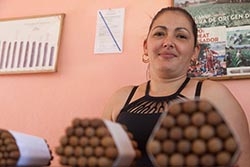 Ten miles east of Havana is Hemingway's Cuba house - Finca Vigia, meaning "lookout house". Finca Vigia is located in the small, working-class town of San Francisco de Paula. The Cuban people have always respected famous writer's choice to live in a modest town, amongst the people he fished with.
Ten miles east of Havana is Hemingway's Cuba house - Finca Vigia, meaning "lookout house". Finca Vigia is located in the small, working-class town of San Francisco de Paula. The Cuban people have always respected famous writer's choice to live in a modest town, amongst the people he fished with.
Built in 1886 by a Spanish Architect Miguel Pascual y Baguer, Finca Vigia was purchased by Hemingway in 1940 for a cost of $12,500. There, Hemingway wrote two of his most celebrated novels: For Whom the Bell Tolls and The Old Man and the Sea. A Movable Feast was written there as well. After Hemingway's death in 1961, the Cuban government took ownership of the property. 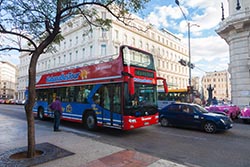 After years of neglect, restoration and preservation work began. Finca Vigia became a museum in 2007 and offers excellent peep into the life and style of Ernest Hemingway.
After years of neglect, restoration and preservation work began. Finca Vigia became a museum in 2007 and offers excellent peep into the life and style of Ernest Hemingway.
A few miles away from Finca Vigia is a village where Ernest Hemingway frequented to fish. He was loved and respected by the locals and his bust is placed on the shores overlooking the sea. From the fishing village, we headed back to the city and drove up a hill to be at the feet of The Christ of Havana. It is a large sculpture representing Jesus of Nazareth on a hilltop overlooking the bay. It is the work of the Cuban sculptor Jilma Madera, who won the commission for it in 1953. 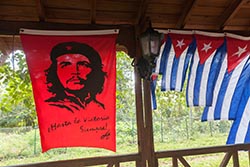 The statue was carved out of white Carrara marble, the same material used for many of the monuments of the Colon Cemetery. The statue is about 20 metres (66 ft) high including a 3-metre (10 ft) base. It weighs approximately 320 tons. The statue was built from 67 blocks of marble that had been brought from Italy after being personally blessed by Pope Pius XII.
The statue was carved out of white Carrara marble, the same material used for many of the monuments of the Colon Cemetery. The statue is about 20 metres (66 ft) high including a 3-metre (10 ft) base. It weighs approximately 320 tons. The statue was built from 67 blocks of marble that had been brought from Italy after being personally blessed by Pope Pius XII.
The figure of Christ is standing with the right hand held near the chin and the left hand near his chest. Facing the city, the statue was left with empty eyes to give the impression of looking at all, from anywhere to be seen. Locals suggest that the statue was sculpted to depict a cigar in the right hand and a mojito in the left hand, honouring popular Cuban culture! 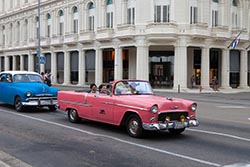 Continuing along the hilltop we reached the castle gates. Morro Castle, is a fortress guarding the entrance to Havana bay. The design was drawn up by the Italian engineer Battista Antonelli; originally under the control of Spain, the fortress was captured by the British in 1762, and was returned to the Spanish under treaty terms a year later. Perched on the promontory on the opposite side of the harbour from Old Havana, it can be viewed from miles around as it dominates the port entrance. Built initially in 1589 in response to raids on Havana harbour, el Morro protected the mouth of the harbour with a chain being strung out across the water to the fort at La Punta.
Continuing along the hilltop we reached the castle gates. Morro Castle, is a fortress guarding the entrance to Havana bay. The design was drawn up by the Italian engineer Battista Antonelli; originally under the control of Spain, the fortress was captured by the British in 1762, and was returned to the Spanish under treaty terms a year later. Perched on the promontory on the opposite side of the harbour from Old Havana, it can be viewed from miles around as it dominates the port entrance. Built initially in 1589 in response to raids on Havana harbour, el Morro protected the mouth of the harbour with a chain being strung out across the water to the fort at La Punta.
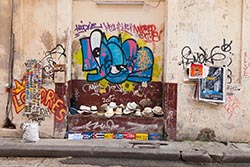 It was now time for lunch. And what better place to be than the Bodeguita del Medio Restaurant. Back 1942, this well-known restaurant was a small grocery store. Its owner, Angel Martinez, began to sell food as the number of customers increased. One day, journalist Leandro Garcia, a regular costumer, decided to put his name on one of the walls and soon many other distinguished personalities followed suit, including Pablo Neruda, Agustin Lara, Brigitte Bardot, Ignacio ‘Bola de Nieve’ Villa, Ernest Hemingway and Salvador Allende. This place has history, which is evidenced by the graffiti and memorabilia. A must visit place for tourist on the Hemingway trail and the love for a mojito.
It was now time for lunch. And what better place to be than the Bodeguita del Medio Restaurant. Back 1942, this well-known restaurant was a small grocery store. Its owner, Angel Martinez, began to sell food as the number of customers increased. One day, journalist Leandro Garcia, a regular costumer, decided to put his name on one of the walls and soon many other distinguished personalities followed suit, including Pablo Neruda, Agustin Lara, Brigitte Bardot, Ignacio ‘Bola de Nieve’ Villa, Ernest Hemingway and Salvador Allende. This place has history, which is evidenced by the graffiti and memorabilia. A must visit place for tourist on the Hemingway trail and the love for a mojito.
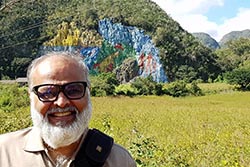 To further follow in Hemingway’s footsteps in Havana, we stopped at El Floridita - a charming little bar that was often visited by Hemingway. It was really crowded and I am told that's the case at all times of day and night. And that it serves the best daiquiri in town. El Floridita has gone as far as installing a life sized statue of Hemingway standing at the bar, just in case there was any confusion about where the writer liked to drink.
To further follow in Hemingway’s footsteps in Havana, we stopped at El Floridita - a charming little bar that was often visited by Hemingway. It was really crowded and I am told that's the case at all times of day and night. And that it serves the best daiquiri in town. El Floridita has gone as far as installing a life sized statue of Hemingway standing at the bar, just in case there was any confusion about where the writer liked to drink.
It was now time to drive towards the airport and conclude our Cuban sojourn. Havana Image Gallery  Photo viewer Photo viewer
|
|
|
Home |
Charity |
Feedback
Privacy Policy | Terms of Usage © YoGoYo.com. All rights reserved. |

































































































































































